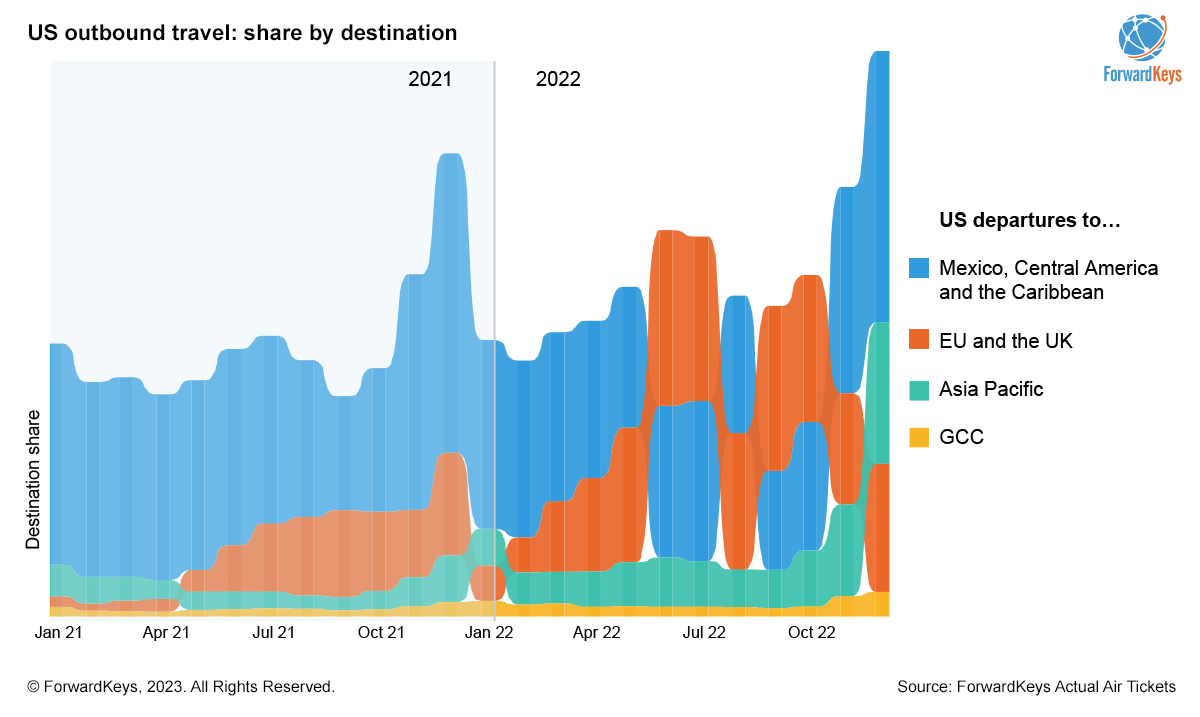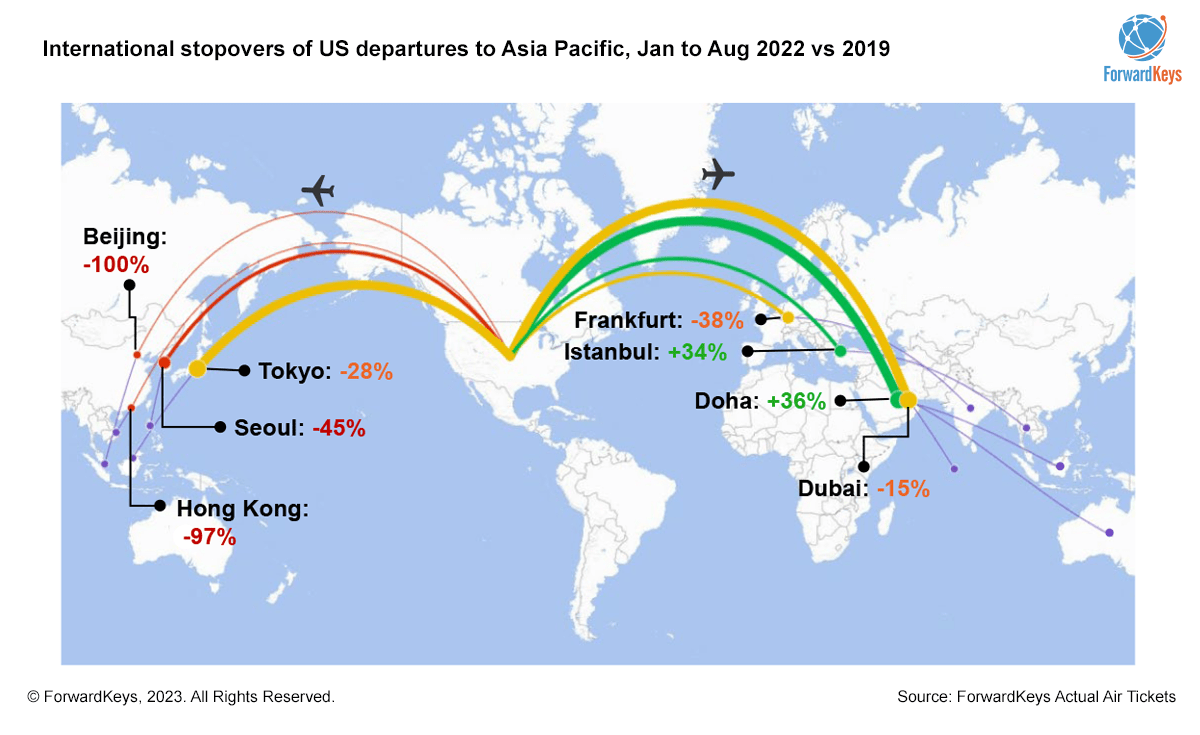Where travel agents earn, learn and save!
News / ForwardKeys: The US a top source market and driver of global travel recovery
Caribbean destinations need to re-think their US strategy now that they are facing tougher competition

Before the pandemic, China was considered the most valuable source market for destinations due to its sheer size, high purchasing power and penchant for luxury goods. Now, amid China’s absence, destinations should be trying to re-engage and entice American tourists, who have helped to reinvigorate the ailing tourism sector, first in 2020 with the Caribbean and Mexico, and now around the globe, from Europe to Asia.
Tourists from the United States have been eager to travel since the travel restrictions were lifted. US tourists were essential to the recovery of regional tourism in 2021 – the Caribbean achieved success in 2021 largely due to the US market, but as the world opens in 2022, Caribbean destinations need to re-think their US strategy now that they are facing tougher competition.
International departures from the US in 2022 are at just-19% of 2019 figures, with sun and beach destinations in the Caribbean and Europe driving this recovery. Caribbean hotspots such as Cancún, Punta Cana, Montego Bay and San José del Cabo have managed to retain the success they achieved in 2021 and continue to increase their international arrivals versus 2019 – even with tough competition from European destinations.

It is not just Mexico and the Caribbean thriving thanks to this top source market. There is a clear appetite to travel from the US worldwide, and long-haul flights are back in favour.
Europe: A taste for history, nature and culture
Europe is fast approaching full recovery, at -17%. This recovery has been largely thanks to the US lifting the ban on incoming European tourists in November 2021, which normalized bilateral tourist flows.
Additionally, favourable US dollar – euro conversion rates are driving demand for travel to Europe. This has been an important element in the decision-making process as tourists consider the cost of airfares, accommodation and activities as well as concerns regarding inflation and looming recession.

2022 saw the comeback of long-haul travel to Europe during the summer season. The pent-up demand showed a preference for sun and beach destinations in the Mediterranean: Turkey, Greece, Portugal and Spain. However, ForwardKeys data shows an increasing interest in other types of nature escapes, with destinations such as Switzerland, Ireland and Iceland also experiencing an influx of arrivals from the US. The culture, history and scenery across Europe have mass appeal to US tourists.
Asia Pacific: A new dawn
The outlook for the Asia Pacific region is promising for several reasons. For example, interest in traveling is high after three years of travel restrictions, while the surging US dollar and the absence of Chinese tourists, which mean lower cost of living and less crowded destinations, are perfect for remote workers and those looking to spend time in tropical paradises such as Thailand or Bali during the Northern Hemisphere’s colder months.
Many destinations in the region are waiting to see the arrival figures for the fourth quarter – the high season in Southeast Asia – and the impact of local travel reactivation on COVID-19 before adopting a more lenient approach to tourism. This has the potential to reactivate travel in the region even further.
However, Asia Pacific still has its challenges. The rising cost of fuel and global inflation mean higher airfares and poorer availability of flights. Flight connectivity in the region needs to be re-established in the absence of key Chinese airport hubs and airlines. For example, Northeast Asia is scarcely connected, which adds to travel time, increases airfares and creates anxiety among tourists keen to explore the continent.
Airlines need to resume long-haul connectivity as tourists are currently reliant on hub airports in Europe and the Middle East to connect to Asia. Airports such as Istanbul and Doha have become popular connecting hubs for US tourists.

With the demand for travel high, airports, airlines and the wider travel eco-system should prepare for a boom to avoid the issues several European destinations endured this past summer. Luckily, this region has time to observe and learn what not to do from regions that opened before them. Airport staff must be properly prepared, airlines require sufficient seat capacity and travel industry stakeholders need data to make wiser business decisions.
In summary, the US as an outbound source market is currently the world’s travel recovery powerhouse, with a high number of tourists keen to explore and spend their hard-earned cash on new experiences. Destinations that have depended on this audience in the past now face more global competition and cannot rely on a generic approach, while destinations that depended more on markets such as China and Russia ought to shift their focus to communicating more openly with travel-hungry American audiences.











